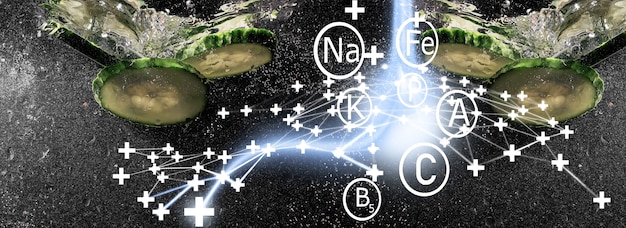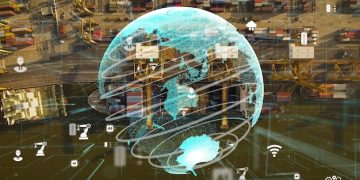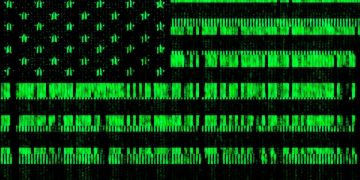Nanotechnology in Military Sensors: Enhancing Defense Capabilities

Nanotechnology plays a pivotal role in developing advanced military sensors by enhancing their sensitivity, precision, and durability, leading to improved threat detection and situational awareness for defense forces.
The integration of nanotechnology into military technology is transforming how defense forces operate. One of the most significant areas of impact is the development of advanced military sensors. The Role of Nanotechnology in Developing Advanced Military Sensors is multifaceted, from enhancing detection capabilities to improving the durability and efficiency of these critical components.
Understanding the Basics of Nanotechnology
Nanotechnology involves the manipulation of matter at the atomic and molecular scale. This capability allows for the creation of materials and devices with unique properties and functionalities. In the context of military applications, nanotechnology offers the potential to revolutionize various aspects of defense technology.
This field’s impact is seen in everything from advanced materials to sophisticated sensors. Let’s delve into the essentials of what makes nanotechnology a game-changer.
What is Nanotechnology?
Nanotechnology is the engineering of functional systems at the molecular scale. This involves working with materials and devices whose structures exhibit novel physical, chemical, and biological properties because of their size.
Key Properties of Nanomaterials
Nanomaterials exhibit unique properties due to their high surface area to volume ratio. These properties often differ significantly from those of their bulk counterparts, allowing for enhanced performance in various applications.
- Enhanced Strength: Nanomaterials can be incredibly strong and lightweight, ideal for protective armor and structural components.
- Improved Conductivity: Some nanomaterials exhibit superior electrical and thermal conductivity, useful in sensors and energy storage.
- Increased Sensitivity: Nanoscale sensors can detect minute changes in their environment, making them ideal for threat detection.
- Enhanced Reactivity: The high surface area of nanomaterials increases their reactivity, beneficial in catalysis and chemical detection.
In conclusion, understanding the basics of nanotechnology is crucial to appreciating its transformative potential in military sensors. The unique properties of nanomaterials enable the development of sensors that are more sensitive, durable, and efficient, leading to enhanced defense capabilities.
Enhanced Detection Capabilities Through Nanotechnology
One of the most significant contributions of nanotechnology to military sensors is the enhancement of detection capabilities. Traditional sensors often face limitations in sensitivity and specificity, which can be overcome by incorporating nanomaterials and nanodevices. This leads to more accurate and reliable threat detection.
Let’s explore how nanotechnology significantly boosts the precision and reliability of military threat detection systems.

Chemical and Biological Agent Detection
Nanosensors can detect trace amounts of chemical and biological agents with high sensitivity and specificity. These sensors often utilize nanomaterials, such as carbon nanotubes and nanowires, to detect changes in electrical conductivity or optical properties upon exposure to target substances.
Improved Radar Systems
Nanotechnology can enhance radar systems by improving the performance of radar antennas and receivers. Nanomaterials can be used to create lightweight and highly efficient radar components, enabling better detection of stealth aircraft and other advanced threats.
- Higher Resolution: Nanomaterials enable radar systems to achieve higher resolution, allowing for clearer and more detailed images of potential threats.
- Increased Range: Enhanced radar components can extend the detection range, providing earlier warning of incoming threats.
- Reduced Size and Weight: Nanotechnology allows for the creation of smaller and lighter radar systems, making them easier to deploy and integrate into various platforms.
In summary, nanotechnology significantly enhances the detection capabilities of military sensors. By enabling the detection of minute amounts of chemical and biological agents and improving the performance of radar systems, nanotechnology contributes to more effective threat detection and improved situational awareness for defense forces.
The Role of Nanomaterials in Improving Sensor Performance
Nanomaterials play a crucial role in enhancing the performance of military sensors. Their unique properties, such as high surface area, enhanced strength, and improved conductivity, make them ideal for various sensor applications. Integrating these materials leads to more efficient and robust sensors.
Examining the incorporation of nanomaterials into sensor designs will reveal significant improvements in their effectiveness and resilience.
Carbon Nanotubes
Carbon nanotubes (CNTs) are one-dimensional nanomaterials with exceptional electrical, thermal, and mechanical properties. They are used in sensors to detect changes in their environment, such as the presence of specific gases or mechanical stress.
Graphene
Graphene, a two-dimensional nanomaterial composed of a single layer of carbon atoms, exhibits excellent electrical conductivity and high surface area. It is used in sensors for detecting chemical and biological agents, as well as in transparent conductive films for displays and touchscreens.
- Enhanced Sensitivity: Graphene-based sensors can detect minute concentrations of target substances, making them highly effective in threat detection.
- Fast Response Time: Graphene sensors offer rapid response times, enabling real-time monitoring and detection of hazards.
- Durability: Graphene is a robust material that can withstand harsh environmental conditions.
In conclusion, the incorporation of nanomaterials like carbon nanotubes and graphene significantly improves the performance of military sensors. These materials offer enhanced sensitivity, faster response times, and improved durability, making them valuable components in advanced sensor technologies.
Nanotechnology in Surveillance and Reconnaissance
Surveillance and reconnaissance are critical components of modern military operations, and nanotechnology is playing an increasingly important role in enhancing these capabilities. Nanotechnology enables the development of smaller, lighter, and more efficient surveillance devices, providing enhanced situational awareness for defense forces.
Exploring how nanotechnology advances surveillance capabilities demonstrates its profound impact on security and intelligence gathering.
Miniaturized Surveillance Devices
Nanotechnology allows for the creation of miniaturized surveillance devices, such as nanosized cameras and sensors, which can be deployed discreetly in various environments.
Enhanced Imaging Technologies
Nanotechnology enhances imaging technologies by improving the resolution and sensitivity of cameras and imaging sensors. Quantum dots and other nanomaterials can be used to create high-resolution imaging systems capable of capturing detailed images in low-light conditions.

- Improved Night Vision: Nanomaterials can enhance night vision capabilities by amplifying available light, enabling soldiers to see clearly in dark environments.
- Thermal Imaging: Nanotechnology can improve thermal imaging by enhancing the sensitivity of thermal sensors, allowing for the detection of heat signatures from a distance.
- Hyperspectral Imaging: Nanotechnology enables the development of hyperspectral imaging systems that capture a wide range of wavelengths, providing detailed information about the composition of materials and objects.
In summary, nanotechnology significantly enhances surveillance and reconnaissance capabilities by enabling the development of miniaturized devices and improving imaging technologies. These advancements provide defense forces with enhanced situational awareness and improved intelligence gathering capabilities.
Challenges and Future Directions
While nanotechnology offers tremendous potential for military applications, there are also several challenges that need to be addressed to fully realize its benefits. These challenges include the scalability of manufacturing processes, the toxicity of certain nanomaterials, and the ethical implications of nanotechnology-enabled surveillance.
Understanding and addressing these issues is critical to unlocking the full potential of nanotechnology in defense. Discussing these challenges and the future strategies to mitigate them will help drive innovation and responsible development in this space.
Scalability of Manufacturing Processes
One of the main challenges in nanotechnology is the scalability of manufacturing processes. Many nanomaterials and nanodevices are currently produced in small quantities using expensive and time-consuming methods.
Toxicity of Nanomaterials
Some nanomaterials have been shown to be toxic to humans and the environment. It is important to conduct thorough toxicity testing and develop safe handling procedures to minimize the risks associated with nanomaterials.
- Developing Safer Nanomaterials: Researchers are working to develop safer nanomaterials that are less toxic and more environmentally friendly.
- Improved Handling Procedures: Developing and implementing strict handling procedures can minimize the risk of exposure to toxic nanomaterials.
- Regulatory Oversight: Regulatory agencies play a crucial role in ensuring the safe development and use of nanotechnology.
In conclusion, while nanotechnology offers significant benefits for military applications, it is important to address the challenges associated with scalability, toxicity, and ethical implications. By overcoming these challenges, the full potential of nanotechnology can be realized, leading to more advanced and effective defense technologies.
Ethical Considerations of Nanotechnology in Military Applications
The use of nanotechnology in military applications raises several ethical considerations that must be carefully examined. These considerations include the potential for enhanced surveillance capabilities, the risk of autonomous weapons systems, and the impact on human rights and privacy.
Acknowledging and addressing these ethical concerns ensures responsible and ethical technological advancements in defense.
Enhanced Surveillance Capabilities
Nanotechnology enables the development of enhanced surveillance capabilities, raising concerns about privacy and the potential for abuse. Smaller, more discreet surveillance devices can be used to monitor individuals and groups without their knowledge or consent.
Autonomous Weapons Systems
Nanotechnology could enable the development of autonomous weapons systems that can make decisions without human intervention. This raises ethical concerns about accountability and the potential for unintended consequences.
- Human Control: Ensuring that humans retain control over weapons systems is essential to preventing unintended consequences.
- Transparency and Accountability: Developing transparent and accountable weapons systems can help to build trust and prevent abuse.
- International Cooperation: International cooperation is needed to establish ethical guidelines for the development and use of autonomous weapons systems.
In summary, the use of nanotechnology in military applications raises several ethical considerations that must be carefully examined. By addressing these ethical concerns and establishing appropriate safeguards, the potential benefits of nanotechnology can be realized while minimizing the risks to society.
| Key Point | Brief Description |
|---|---|
| 🔬 Enhanced Detection | Nanosensors improve detection of chemical/biological agents. |
| 🛡️ Material Strength | Nanomaterials increase strength and reduce weight of equipment. |
| 📡 Surveillance | Miniaturized devices enhance reconnaissance capabilities. |
| ⚠️ Ethical Concerns | Usage raises issues re: privacy and autonomous weapons. |
Frequently Asked Questions
▼
Nanotechnology enhances the sensitivity, precision, and durability of military sensors, improving their ability to detect threats and provide better situational awareness.
▼
Carbon nanotubes’ exceptional electrical and mechanical properties make them ideal for detecting changes in the environment, enhancing sensor responsiveness and accuracy.
▼
Ethical issues include enhanced surveillance capabilities leading to privacy breaches and the development of autonomous weapons systems with potential unintended consequences.
▼
Yes, nanomaterials allow for the creation of lightweight, highly efficient radar components, enhancing detection range, resolution, and overall system performance.
▼
Graphene’s high surface area and excellent electrical conductivity enable the creation of highly sensitive sensors, transparent conductive films, and other advanced applications.
Conclusion
In conclusion, nanotechnology is revolutionizing military sensors by enhancing their detection capabilities, improving material performance, and enabling advanced surveillance technologies. While challenges and ethical considerations remain, ongoing research and development promise to unlock even greater potential, transforming defense capabilities and ensuring national security.





